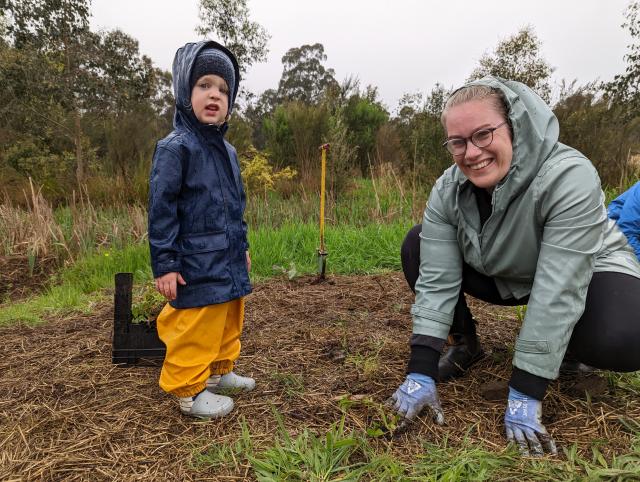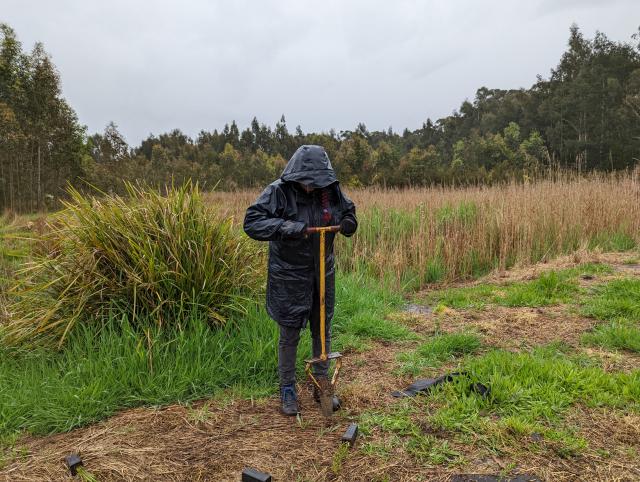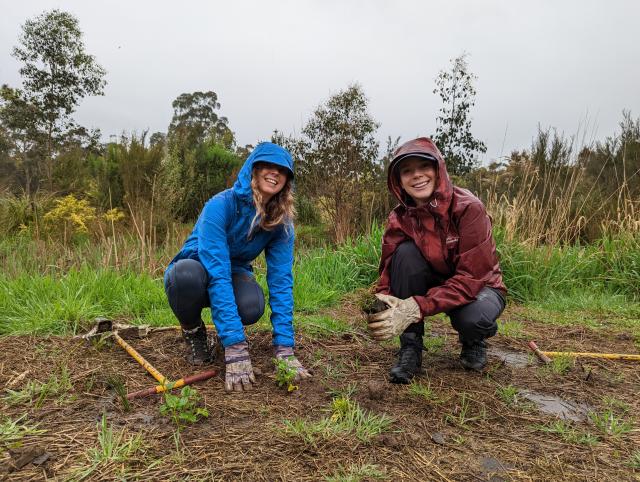By Callum Ludwig
Zoos Victoria staff and Friends of the Helmeted Honeyeater (FoHH) volunteers have teamed up to begin planting new vegetation for the Burrungma Biik site at the Yellingbo Nature Conservation Area.
Kicking off the program on Wednesday 12 August, FoHH Environmental Coordinator Eliza Lamb said they rely heavily on volunteer support to achieve what they do.
“We need volunteers to come and help us with these kinds of events and to get plants in the ground, otherwise we couldn’t do what we do,” she said.
“It’s wonderful also that we can have Zoos Victoria staff coming out and joining us at Yellingbo because they’ve worked on their Totes for Wildlife program where we’re getting this funding to plant these trees and it’s great they can see the full circle of where the money is going.”
Zoos Victoria’s Totes for Wildlife program identifies a local threatened species each year and raises funds for vital conservation projects to protect them through the sale of themed tote bags.
Zoos Victoria Conservation Campaigner Estelle Van Hoeydonck said they were able to sell 10,000 bags for the Helmeted Honeyeater over 2020-21.
“Those bag sales were able to have 10,000 plants during the day I’m here at Yellingbo to support Helmeted Honeyeaters,” she said.
“We’re very excited that by having our zoo members and visitors interested in contributing by buying a bag we’re able to directly have an impact on the Helmeted Honeyeater, with the help of the Friends of the Helmeted Honeyeater.”
10,000 plants and funding for weed management are being dedicated to reinstating swampy riparian woodland at the site this year. The first 4000 plants were planted in September, supplied by the FoHH Indigenous nursery, and made possible by the efforts of staff and volunteers.
Ms Lamb said the hope is that the site will be a future release site for both the Helmeted Honeyeater and Leadbeater’s Possum.
“Both species are critically endangered and they need more space for additional populations in order for both species to survive and thrive,” she said.
“We’re planting this sight out with species that are crucial to their habitat and we hope to have Helmeted Honeyeaters breeding in those sites after four years.”
Burrungma Biik means ‘misty lands’ in the Woiwurrung language and the name was given to the site by Wurrundjeri Elder Aunty Gail Smith. The 2.3-hectare site was added to the Yellingbo Nature Conservation Area through the combined efforts of Trust for Nature, FoHH and the Port Phillip and Westernport Catchment Management Authority (which have since integrated into Melbourne Water) in 2017.
Ms Lamb said this kind of change can’t be done without community support.
“It’s really great having school groups and different community groups coming out onto site and working with us and taking that message back to their communities and their social networks,” she said.
“School groups have been so passionate about supporting the threatened species and doing what they can to get out and then spread that message to their peers and to their families and to their local community. If anyone in the community is looking to take part, go to our website and get in touch with us.”
Since the acquisition of the site, a further 1.2 hectares were included in the Burrungma Biik restoration project with FoHH together with Parks Victoria and Yarra4life undertaking habitat restoration works with around 51,000 plants being put into the area before Covid. Since the easing of the pandemic, over 7000 plants have been added into this space in the last 6 months.
Ms Van Hoeydonck said through Totes for Wildlife, Zoos Victoria hopes not only to have a biological impact but a human one.
“We’re always trying to encourage people to have increased care and recognition of our local threatened species. As a result of Totes for Wildlife, we saw a 16 per cent increase in recognition and care for the Helmeted Honeyeater throughout our zoo populations, which is great,” she said.
“We’ve currently got a new tote bag, highlighting the Golden-rayed Blue butterfly, which is another threatened species.”











